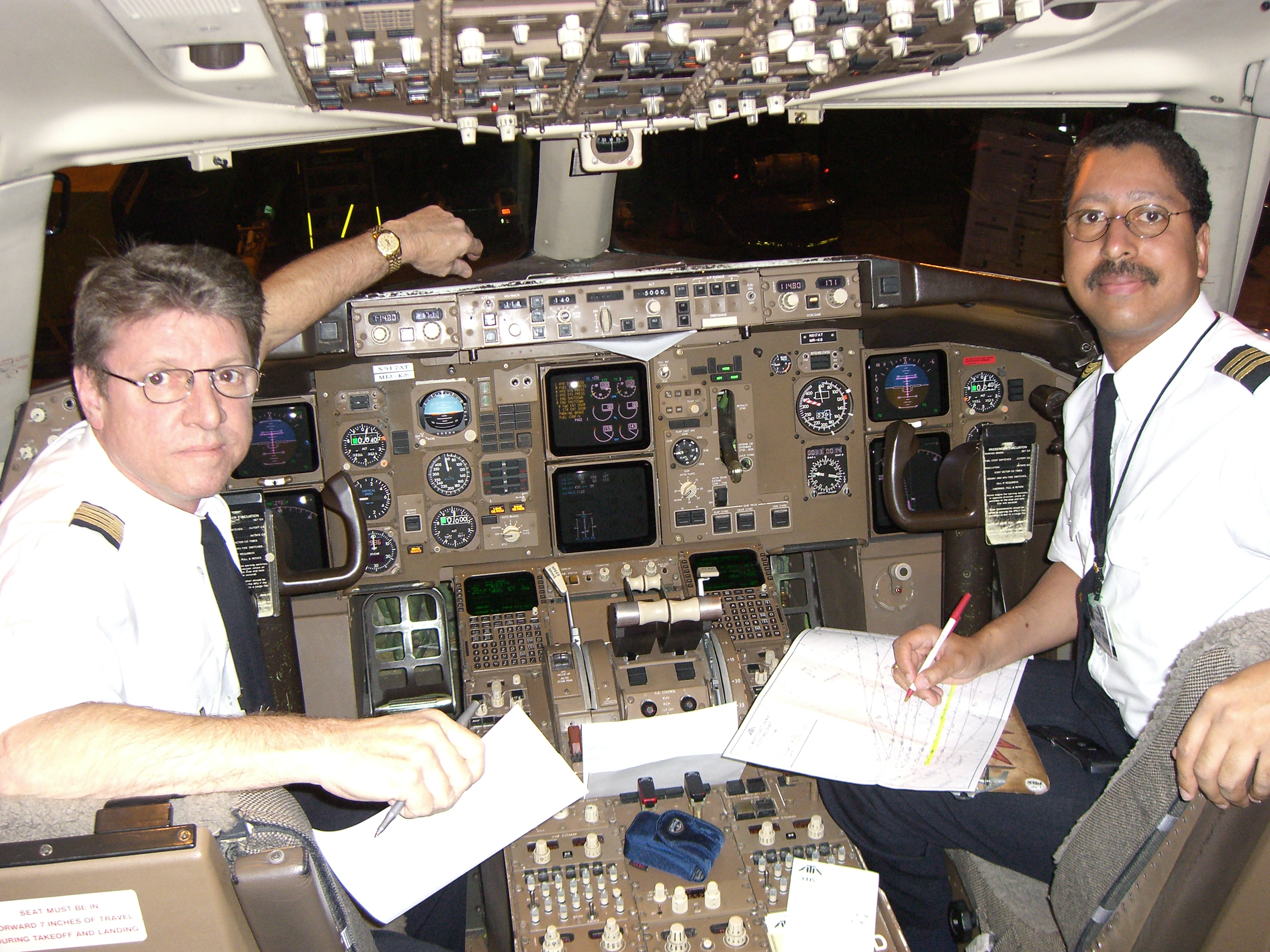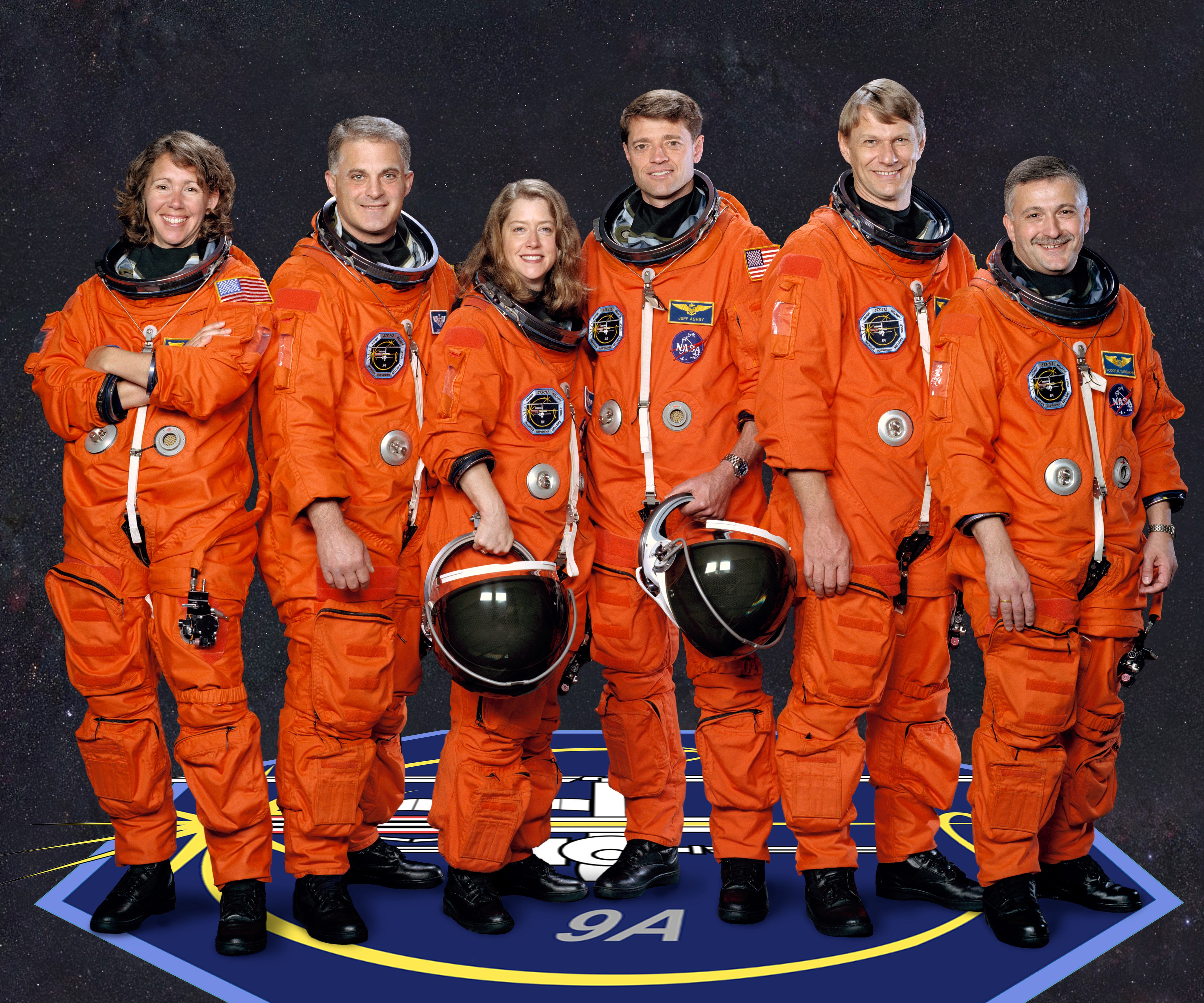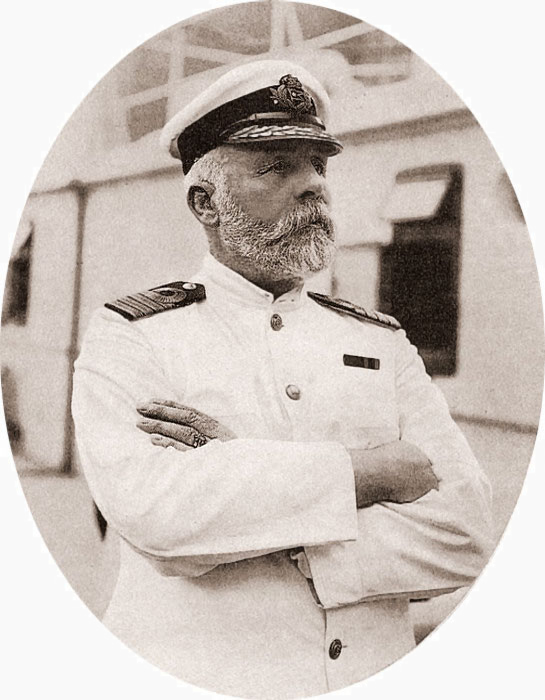|
Captain (aviation)
The pilot in command (PIC) of an aircraft is the person aboard the aircraft who is ultimately responsible for its operation and safety during flight. This would be the captain in a typical two- or three- pilot aircrew, or "pilot" if there is only one certificated and qualified pilot at the controls of an aircraft. The PIC must be legally certificated (or otherwise authorized) to operate the aircraft for the specific flight and flight conditions, but need not be actually manipulating the controls at any given moment. The PIC is the person legally in charge of the aircraft and its flight safety and operation, and would normally be the primary person liable for an infraction of any flight rule. The strict legal definition of PIC may vary slightly from country to country. The International Civil Aviation Organization, a United Nations agency, definition is: "The pilot responsible for the operation and safety of the aircraft during flight time." ''Flight time'' for airplanes is def ... [...More Info...] [...Related Items...] OR: [Wikipedia] [Google] [Baidu] |
Crew Amt4586 Preflight
A crew is a body or a class of people who work at a common activity, generally in a structured or hierarchical organization. A location in which a crew works is called a crewyard or a workyard. The word has nautical resonances: the tasks involved in operating a ship, particularly a sailing ship, providing numerous specialities within a ship's crew, often organised with a chain of command. Traditional nautical usage strongly distinguishes officers from crew, though the two groups combined form the ship's company. Members of a crew are often referred to by the title ''crewman'' or ''crew-member''. ''Crew'' also refers to the sport of rowing, where teams row competitively in racing shells. See also *For a specific sporting usage, see rowing crew. *For filmmaking usage, see film crew. *For live music usage, see road crew. *For analogous entities in research on human judgment and decision-making, see team and judge–advisor system. *For stagecraft usage, see stage crew. *For video p ... [...More Info...] [...Related Items...] OR: [Wikipedia] [Google] [Baidu] |
Commercial Pilot Licence
A commercial pilot licence (CPL) is a type of pilot licence that permits the holder to act as a pilot of an aircraft and be paid for their work. Different licenses are issued for the major aircraft categories: airplanes, airships, balloons, gliders, gyroplanes and helicopters. Depending on the jurisdiction these may all be on the same document. A CPL will typically have no expiry date. However, a valid medical certificate and valid rating will be required to use it. A pilot's ratings may be listed on the licence, including the types of aircraft that can be flown (single-engine or multiengine), whether flight under instrument flight rules is allowed (instrument rating), and whether instructing and examining of trainee pilots can be done (instructor or examiner rating). Requirements The basic requirements to obtain the license and the privileges it confers are agreed internationally by the International Civil Aviation Organization (ICAO). However the actual implementation varies ... [...More Info...] [...Related Items...] OR: [Wikipedia] [Google] [Baidu] |
Pilot Logbook
A pilot logbook is a record of a Aircraft pilot, pilot's flying hours. It contains every flight a pilot has flown, including flight time, number of landings, and types of instrument approaches made. Pilots also log flight simulator, simulator time, as it counts towards training. In most countries, pilots are required to maintain a logbook, per their government's aviation regulations. The primary purpose is to show that certain requirements have been met for a Pilot licensing and certification, certificate or rating, and for currency purposes. Flight logging requirements by country Australia In Australia, pilot logbooks must be retained for seven years after the last entry. European Union The European Aviation Safety Agency (EASA) provides a sample logbook format in which all flights should be logged. Information to be logged includes location and time of departure and arrival, the aircraft registration, the aircraft make, model and variant, the name of the pilot in command, w ... [...More Info...] [...Related Items...] OR: [Wikipedia] [Google] [Baidu] |
Pilot Flying
In commercial aviation with a two-person flight crew, the pilot flying (PF) is the pilot operating the flight controls of the aircraft. The other pilot is referred to as the pilot monitoring (PM) or pilot not flying (PNF). Before a flight departs, the pilot in command The pilot in command (PIC) of an aircraft is the person aboard the aircraft who is ultimately responsible for its operation and safety during flight. This would be the captain in a typical two- or three-pilot aircrew, or "pilot" if there is only ... must decide who the pilot flying and pilot monitoring will be for the remainder of the flight, or for any specific phase of flight (e.g. take-off, approach or landing). Typically, the flight crew swap roles on the return leg. References {{aviation-stub Aircraft operations ... [...More Info...] [...Related Items...] OR: [Wikipedia] [Google] [Baidu] |
Airship
An airship or dirigible balloon is a type of aerostat or lighter-than-air aircraft that can navigate through the air under its own power. Aerostats gain their lift from a lifting gas that is less dense than the surrounding air. In early dirigibles, the lifting gas used was hydrogen, due to its high lifting capacity and ready availability. Helium gas has almost the same lifting capacity and is not flammable, unlike hydrogen, but is rare and relatively expensive. Significant amounts were first discovered in the United States and for a while helium was only available for airships in that country. Most airships built since the 1960s have used helium, though some have used hot air.A few airships after World War II used hydrogen. The first British airship to use helium was the ''Chitty Bang Bang'' of 1967. The envelope of an airship may form the gasbag, or it may contain a number of gas-filled cells. An airship also has engines, crew, and optionally also payload accommodation ... [...More Info...] [...Related Items...] OR: [Wikipedia] [Google] [Baidu] |
Sea Captain
A sea captain, ship's captain, captain, master, or shipmaster, is a high-grade licensed mariner who holds ultimate command and responsibility of a merchant vessel.Aragon and Messner, 2001, p.3. The captain is responsible for the safe and efficient operation of the ship, including its seaworthiness, safety and security, cargo operations, navigation, crew management, and legal compliance, and for the persons and cargo on board. Duties and functions The captain ensures that the ship complies with local and international laws and complies also with company and flag state policies. The captain is ultimately responsible, under the law, for aspects of operation such as the safe navigation of the ship,Aragon and Messner, 2001, p.4. its cleanliness and seaworthiness,Aragon and Messner, 2001, p.5. safe handling of all cargo,Aragon and Messner, 2001, p.7. management of all personnel,Aragon and Messner, 2001, p.7-11. inventory of ship's cash and stores,Aragon and Messner, 2001, p.11-12. an ... [...More Info...] [...Related Items...] OR: [Wikipedia] [Google] [Baidu] |
Aircrew
Aircrew, also called flight crew, are personnel who operate an aircraft while in flight. The composition of a flight's crew depends on the type of aircraft, plus the flight's duration and purpose. Commercial aviation Flight deck positions In commercial aviation, the aircrew are called ''flight crew''. Some flight crew position names are derived from nautical terms and indicate a rank or command structure similar to that on ocean-going vessels, allowing for quick executive decision making during normal operations or emergency situations. Historical flightdeck positions include: * Captain, the pilot highest-ranking member or members of a flight crew. * First officer (FO, also called a co-pilot), another pilot who is normally seated to the right of the captain. (On helicopters, an FO is normally seated to the left of the captain, who occupies the right-hand seat).Smith, PatrickPatrick Smith's Ask The Pilot: When a Pilot Dies in Flight AskThePilot.com website, 2013, whic ... [...More Info...] [...Related Items...] OR: [Wikipedia] [Google] [Baidu] |
Airline Transport Pilot Licence
The airline transport pilot license (ATPL), or in the United States of America, an airline transport pilot (ATP) certificate is the highest level of aircraft pilot certificate. In the United States, those certified as airline transport pilots (unconditional) are authorized to act as pilot in command on scheduled air carriers' aircraft under CFR 14 Part 121. In the UK, pilots must hold an ATPL before they can be pilot in command on an aircraft with nine or more passenger seats. Context Any pilot operating an aircraft for pay must start by obtaining a commercial pilot licence (CPL). Airline transport pilot certifications do not have special endorsements, such as an instrument rating, as airline transport pilots must already possess knowledge and training in these areas. However, aircraft heavier than 12,500 pounds still require pilots to have a "type rating" (specific to the make and model of aircraft) certification. Theoretical examination EASA The EASA ATPL requires ... [...More Info...] [...Related Items...] OR: [Wikipedia] [Google] [Baidu] |
ICAO
The International Civil Aviation Organization (ICAO, ) is a specialized agency of the United Nations that coordinates the principles and techniques of international air navigation, and fosters the planning and development of international air transport to ensure safe and orderly growth. ICAO headquarters are located in the '' Quartier International'' of Montreal, Quebec, Canada. The ICAO Council adopts standards and recommended practices concerning air navigation, its infrastructure, flight inspection, prevention of unlawful interference, and facilitation of border-crossing procedures for international civil aviation. ICAO defines the protocols for air accident investigation that are followed by transport safety authorities in countries signatory to the Chicago Convention on International Civil Aviation. The Air Navigation Commission (ANC) is the technical body within ICAO. The commission is composed of 19 commissioners, nominated by the ICAO's contracting states and appo ... [...More Info...] [...Related Items...] OR: [Wikipedia] [Google] [Baidu] |
Aircraft
An aircraft is a vehicle that is able to fly by gaining support from the air. It counters the force of gravity by using either static lift or by using the dynamic lift of an airfoil, or in a few cases the downward thrust from jet engines. Common examples of aircraft include airplanes, helicopters, airships (including blimps), gliders, paramotors, and hot air balloons. The human activity that surrounds aircraft is called ''aviation''. The science of aviation, including designing and building aircraft, is called '' aeronautics.'' Crewed aircraft are flown by an onboard pilot, but unmanned aerial vehicles may be remotely controlled or self-controlled by onboard computers. Aircraft may be classified by different criteria, such as lift type, aircraft propulsion, usage and others. History Flying model craft and stories of manned flight go back many centuries; however, the first manned ascent — and safe descent — in modern times took place by larger hot-air ... [...More Info...] [...Related Items...] OR: [Wikipedia] [Google] [Baidu] |
Code Of Federal Regulations
In the law of the United States, the ''Code of Federal Regulations'' (''CFR'') is the codification of the general and permanent regulations promulgated by the executive departments and agencies of the federal government of the United States. The CFR is divided into 50 titles that represent broad areas subject to federal regulation. The CFR annual edition is published as a special issue of the '' Federal Register'' by the Office of the Federal Register (part of the National Archives and Records Administration) and the Government Publishing Office. In addition to this annual edition, the CFR is published online on the Electronic CFR (eCFR) website, which is updated daily. Background Congress frequently delegates authority to an executive branch agency to issue regulations to govern some sphere. These statutes are called "enabling legislation." Enabling legislation typically has two parts: a substantive scope (typically using language such as "The Secretary shall promulgate ... [...More Info...] [...Related Items...] OR: [Wikipedia] [Google] [Baidu] |
Runway
According to the International Civil Aviation Organization (ICAO), a runway is a "defined rectangular area on a land aerodrome prepared for the landing and takeoff of aircraft". Runways may be a man-made surface (often asphalt concrete, asphalt, concrete, or a mixture of both) or a natural surface (sod, grass, soil, dirt, gravel, ice, sand or road salt, salt). Runways, as well as taxiways and Airport apron, ramps, are sometimes referred to as "tarmac", though very few runways are built using Tarmacadam, tarmac. Takeoff and landing areas defined on the surface of water for seaplanes are generally referred to as waterways. Runway lengths are now International Civil Aviation Organization#Use of the International System of Units, commonly given in meters worldwide, except in North America where feet are commonly used. History In 1916, in a World War I war effort context, the first concrete-paved runway was built in Clermont-Ferrand in France, allowing local company Michelin to ... [...More Info...] [...Related Items...] OR: [Wikipedia] [Google] [Baidu] |


.jpg)

.jpg)


